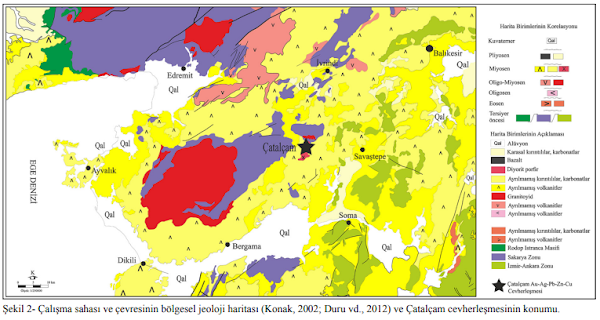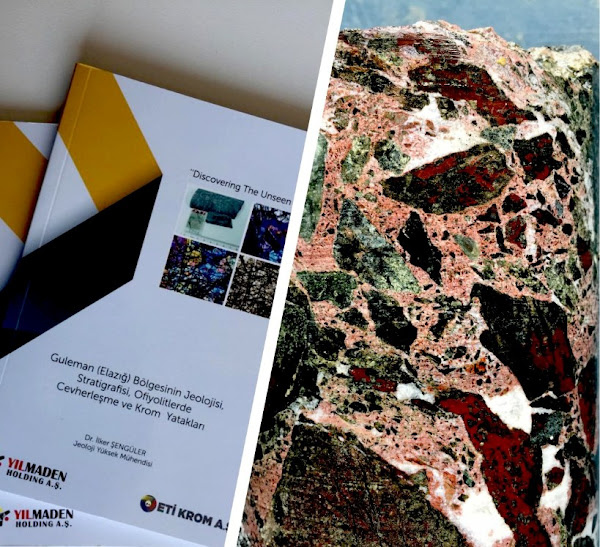2025 Kritik Mineraller Listesi yeni 50 kritik mineral eklenerek güncellendi ve yayımlandı
6 Kasım 2025
2025 ABD Kritik Mineraller Listesi için metodoloji ve
teknik girdiler rapor halinde sunuldu
KAYNAKLAR
https://www.usgs.gov/programs/mineral-resources-program/science/about-2025-list-critical-minerals
Explore the 2025 List of
Critical Minerals
- Aluminum, used in
almost all sectors of the economy
- Antimony, used in
lead-acid batteries and flame retardants
- Arsenic, used in
semiconductors
- Barite, used in oil and
gas drilling and medical imaging
- Beryllium, used to
manufacture metal alloys for aerospace and defense
- Bismuth, used in nontoxic
metals, atomic research, and some medical applications
- Boron, used to harden
steel and glass and in nuclear energy
- Cerium, used in catalytic
converters, ceramics, glass, metallurgy, and polishing
- Cesium, used in atomic
clocks for global positioning systems,
- Chromium, used in
stainless steel
- Cobalt, used in batteries
and metal alloys used in extreme temperatures
- Copper, used widely in
wiring and cables
- Dysprosium, used in
permanent magnets, data storage devices, and lasers
- Erbium, used in fiber optics, optical
amplifiers, lasers, and glass colorants
- Europium, used in
phosphors and nuclear control rods
- Fluorspar, used to make synthetic
materials and plastics, iron and steel, ceramics, glass, and refineries
- Gadolinium, used in
medical imaging, permanent magnets, and steel
- Gallium, used in
semiconductors
- Germanium, used in fiberoptics,
semiconductors and night vision
- Graphite , used in lubricants,
batteries, and fuel cells
- Hafnium, used in nuclear
control rods, semiconductors and aerospace
- Holmium, used in
permanent magnets, nuclear control rods, and lasers
- Indium, used in
flat-panel displays and touchscreens
- Iridium, used for
electrochemical processes and as a chemical catalyst
- Lanthanum, used in chemical
catalysts, metallurgy, and batteries
- Lead, used in batteries, ammunition,
glass and ceramics production
- Lithium, used in
rechargeable batteries
- Lutetium, used for medical imaging,
electronics, and some cancer therapies
- Magnesium, used in metal alloys used
by aerospace, automotive and electronics industries
- Manganese, used in steel production
and batteries
- Metallurgical coal, used in steel
production
- Neodymium, used in permanent magnets,
in medical and industrial lasers, and in the production of rubber
- Nickel, used to make
high-strength steel, and rechargeable batteries
- Niobium, used to
strengthen steel
- Palladium, used in
catalytic converters, electronics, and as a chemical catalyst
- Phosphate, used in fertilizers
- Platinum, used in catalytic
converters, aerospace alloys, chemical refining and petroleum processing
- Potash, used in most
fertilizers
- Praseodymium, used in
permanent magnets, batteries, aerospace metal alloys, ceramics, and
colorants
- Rhenium, used in
high-performance jet engines and gas turbines
- Rhodium, used in
catalytic converters, electrical components, and as a chemical catalyst
- Rubidium, used in atomic clocks key
to global positioning systems (GPS), data network syncing and research and
development
- Ruthenium, used as
catalysts, as well as electrical contacts and chip resistors in computers
- Samarium, used in
permanent magnets, in nuclear reactors, and in cancer treatments
- Scandium, used to
strengthen metal alloys, in fuel cells and in high-intensity lighting
- Silicon, used in silicon
wafers fundamental to semiconductors
- Silver, used in electrical
circuits, batteries, solar cells, and anti-bacterial medical instruments
- Tantalum, used in
materials and electronic components that need to withstand high
temperatures and harsh environments
- Tellurium, used in solar
cells, to strengthen steel and copper, and to produce rubber, microchips
and laser diodes
- Terbium, used in
permanent magnets, fiber optics, lasers, and solid-state devices
- Thulium, used in lasers,
x-ray devices, and metal alloys suitable for industrial products and
nuclear reactor components
- Tin, used for food and
beverage cans, circuit board components and corrosion-resistant metal
coatings
- Titanium, used as a white
pigment and in metal alloys, including for airplanes, spacecraft and
military vehicle armor
- Tungsten, primarily used
to make wear-resistant metals for jet engines, ammunition, and mining and
cutting equipment
- Uranium, used as a
nuclear fuel and medical applications
- Vanadium, used to strengthen iron and
steel
- Ytterbium, used for catalysts,
lasers, and metallurgy
- Yttrium, used in lighting and display
technologies and in high-performance metal alloys
- Zinc, used as a coating to protect
iron and steel from rust and corrosion
- Zirconium, used in nuclear reactors,
aerospace heat shields and engine components






Yorumlar
Yorum Gönder